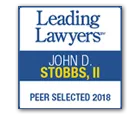The government has many reasons for criminalizing the production and distribution of child pornography. First, there is a compelling governmental interest in safeguarding the physical and psychological well being of minors. Second, the distribution of child pornography is intrinsically connected to the sexual abuse of children. Third, distribution of child pornography provides integral economic incentive for its production. Finally, there is little social value of reproductions of lewd sexual conduct of children. These were all reasons outlined in the landmark case of New York v. Ferber in which the Supreme Court established a constitutional foundation for criminalizing child pornography. 458 U.S. 747 (1982).
In addition to government interest in criminalizing child pornography, there is also a public interest. Tragedies involving children are usually gruesome and highly publicized. This commonly leads to greater public outrage and swifter government action. Congress has had little trouble passing legislation against child pornography due to the high levels of public support.
While admirable, it is important to acknowledge that when harsh punishments are put in place with little pushback, they often infringe on some constitutional right. It is also important to ask whether or not the harsh penalties actually accomplish any measurable benefit.
Child pornography laws were practically nonexistent before 1970. However, the mid-80s saw the first wave of laws enacted. The first major federal law passed by Congress was the 1984 Child Protection Act. The CPA of 1984 amended the federal criminal code covering sexual exploitation of children. Notably, it prohibited the distribution of materials involving the sexual exploitation of minors even if the material was not found to be “obscene.” Before this legislation, obscenity of images depicting minors was based off of a common law standard that balanced the nature of the image with First Amendment rights. What the Child Protection Act of 1984 did was remove First Amendment protection from child pornography by stating such depictions were per se illegal. In 1990 Congress passed the Child Protection Restoration and Penalties Enhancement Act. This law strengthened the sentences for distribution of child pornography. Additionally, the federal law criminalized “mere” possession of child pornography.
Entering the 1990s, with the increased access and use of the internet, Congress found a greater need to pass additional child pornography laws. In 1996, Congress passed the Child Pornography Prevention Act of 1996. The CPPA was a substantial rewriting of federal criminal laws addressing sexual exploitation of children to encompass the new digital age. The CPPA restricted child pornography on the internet, including virtual child pornography, which are images depicting child pornography even if an actual child was not used in the creation of the image. The CPPA also revised the definition of “visual depiction” to include data stored on a computer disk or by electronic means which are capable of conversion into a visual image. The CPPA further expanded the scope of penalties and provided enhanced penalties for offenders with a prior conviction. Recently, Congress passed the Child Protection Act of 2012, which again amended certain provisions of the federal criminal code regarding sexual exploitation of children.
Child pornography statutes are codified in Title 18 of the United States Code. Currently under the code, 18 U.S.C. § 2251 covers “Sexual exploitation of children” which includes production of child pornography. 18 U.S.C. § 2252 covers “Certain activities relating to material involving the sexual exploitation of minors.” This section includes possession, distribution, and receipt of child pornography. On the Department of Justice website, it makes sure to state that federal jurisdiction applies when the internet is used to commit a violation. It is the use of the internet that connects child pornography into “interstate or foreign commerce” and therefore within Congress’s ability to regulate. Under these laws, all violations are treated as a serious crime with equally serious penalties. Under § 2251, there is a statutory minimum of 15 years to a maximum of 30 years in prison. A first time offender convicted of transporting child pornography under § 2252 faces a minimum of 5 years to a maximum of 20 years in prison.
Offenders may be prosecuted under state laws in addition, or in place of, federal law. Finally, all sex offenders must register on the national sex offender registry.
The national sex offender registry was created when Congress passed the Adam Walsh Child Protection and Safety Act of 2006. The act generally expanded already existing federal statutes, making more explicit the registration requirements that were previously under state discretion. All states are mandated to participate in the registry. Since its passing, the registry has come under much scrutiny. It is most commonly challenged as unconstitutional on several grounds including, ex post facto law, cruel and unusual punishment, overbroad, and violating due process.
The registry is broken into a three-tier system based on the seriousness of the offense.
Offenders are required to update the registry with their whereabouts in compliance with whatever tier they were placed in. Starting with the most serious level, Tier 3 offenders must update their whereabouts every three months for the remainder of their life. Tier 2 requires offenders to update their whereabouts every six months for 25 years. Finally, Tier 1 requires offenders to update their whereabouts once a year for 15 years. The failure to follow the registry guidelines constitutes a felony.
Placement on the registry carries with it a lifelong stigma, and has proven difficult for some to comply with. While the Act requires states to explain the registration requirements and ensure the offender understands the requirements, there are no accommodations for the mentally ill who are often incapable of comprehending or complying with the requirements.
Unfortunately, those who commit sexual offenses are often struggling with mental disease.
Another major concern with the registry is that it does not differentiate between violent and non-violent offenders. Therefore, all the requirements of being on the registry are equally burdensome no matter how serious the offense was. Those on the registry, even for a minor offense, are often ostracized by neighbors, friends, and family. They have difficulty finding or keeping employment, and therefore are unable to successfully rejoin society, even if they have no history of violence. The lack of a supportive community leads to further recidivism.
An example of non-violent offenders are minors who distribute self-produced child pornography. These are nude or semi-nude images created by minors and sent to other users by means of the internet or smartphone. In a survey conducted by The National Campaign to Prevent Teen and Unplanned Pregnancy and CosmoGirl.com, the survey found that, of the 653 teens, twenty percent of all teens had sent a sexually revealing photo or video. This is commonly referred to as “sexting.” A judge does not have the discretion to excuse a juvenile from registration requirements. Therefore, minors who send or share these self-produced images may not only face criminal charges, but would also be required to register as sex offenders in the national registry. This requirement is extremely harsh for self-produced images, often by minors who simply do not understand the gravity of what they are doing.
The efforts of the government to crack down on child pornography are admirable. The necessity to decrease the production of such images is an important cause. Furthermore, harsh punishments for violent or repeat offenders are justifiable and appropriate. However over the past decade, the enforcements that have been put in place have done little to actually solve the problem. There has been no decrease in the volume of images infiltrating the digital market.
Rather, with the prominence of handheld devices such as smartphones and tablets, production has only increased. This is an obvious shortcoming of the current child pornography laws.
Instead of passing laws that are able to get to the root of the problem, our government has put in place a series of extremely harsh penalties for even minor offenses. With dockets and jail cells already overflowing, it will become more and more important to find alternative means beyond harsh legislation to combat the problem.
References
Lara Geer Farley, “The Adam Walsh Act: The Scarlet Letter of the Twenty-First Century.” 47 Washburn L.J. 471 (2008).
Michael J. Henzey, “Going on the Offensive: A Comprehensive Overview of Internet Child Pornography Distribution and Aggressive Legal Action.” 11 Appalachian J.L. 1 (2011).
Raychelle Cassada Lohmann, “Sexting Teens,” Psychology Today (March 30, 2011) available at http://www.psychologytoday.com/blog/teen-angst/201103/sexting-teens
Nancy McKenna, “The Adam Walsh Child Protection and Safety Act: What will be the impact?”
4 No. 11 Quinlan, Computer Crime and Technology in Law Enforcement art. 6 (2009).




